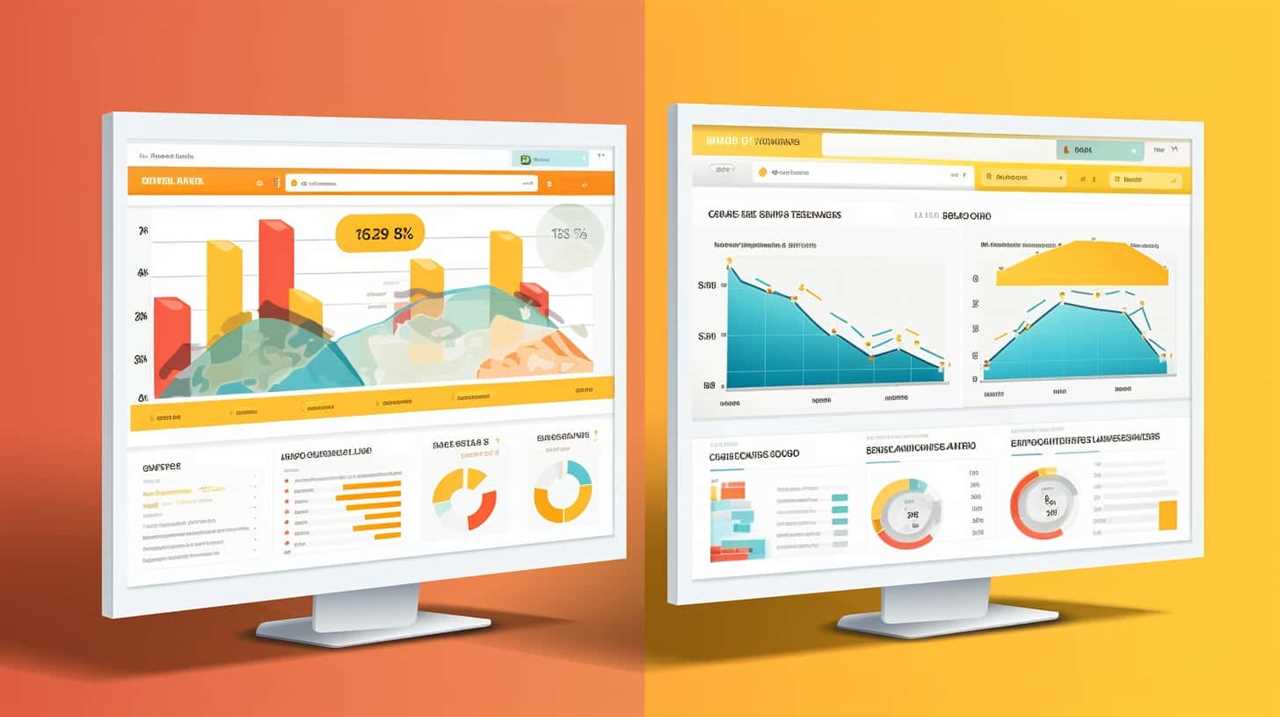Keyword Research
Understanding Topical Vs Evergreen Content: A Comprehensive Guide

Welcome to our comprehensive tutorial on the subtleties of topical versus evergreen content. As content creators, we recognize the importance of developing content that not only captivates the audience but also boosts sales. In this tutorial, we will delve into the essential differences between topical and evergreen content and how to effectively employ each type to craft a successful content strategy.
Key Takeaways:
- Topical content is timely, relevant, and regularly updated, focusing on current events or information.
- Evergreen content remains relevant for a long time and is SEO-optimized to drive continuous traffic.
- Understanding the differences between topical and evergreen content is crucial for creating an effective content strategy.
- Topical content captures user attention and provides actionable advice.
- Evergreen content answers frequently asked questions and provides valuable advice.
What is Topical Content?
Topical content refers to timely, relevant, and regularly updated content. It focuses on current events or information to deliver targeted and relevant content to visitors. Examples of topical content include industry news, current events, trends, and holiday seasons. Topical content is designed to capture user attention and provide actionable advice that can drive conversions.
Topical content allows us to stay current and engage our audience by providing them with up-to-date information that is relevant to their needs. By addressing the latest industry trends or news, we position ourselves as a reliable source of information for our readers. This helps build trust and credibility, ultimately driving conversions and boosting sales.
When creating topical content, it is important to consider the relevance and timeliness of the topic. By staying informed about the latest trends and events in our industry, we can ensure that our content remains fresh and valuable to our audience. Additionally, topical content provides an opportunity to capture user attention and increase our visibility in search engine results.
Importance of Topical Content
Topical content plays a crucial role in capturing user attention and driving traffic to our website. By addressing current events or trends, we can attract visitors who are actively searching for information related to these topics. This not only increases our website’s visibility but also allows us to connect with our target audience and provide them with valuable insights.
Furthermore, topical content enables us to position ourselves as industry leaders by showcasing our knowledge and expertise in the latest developments. By consistently delivering timely and relevant content, we can establish ourselves as a go-to resource for our audience, fostering trust and loyalty.
In conclusion, topical content is an essential component of a comprehensive content strategy. By staying current, capturing user attention, and providing valuable insights, we can drive traffic, engage our audience, and ultimately achieve our business goals.
What is Evergreen Content?
Evergreen content is a vital component of any comprehensive content strategy. It refers to content that remains relevant and valuable to readers over an extended period of time. Unlike topical content that focuses on current events or trends, evergreen content is designed to provide timeless information that continues to attract and engage readers long after its initial publication. This type of content is considered the backbone of a website, driving continuous traffic and contributing to long-term SEO success.
One of the key advantages of evergreen content is its longevity. By creating content that provides valuable insights, answers common questions, or offers practical advice, you can ensure that it remains useful to readers for months or even years. The timeless nature of evergreen content allows you to continually drive traffic to your website and establish yourself as an authority in your industry.
SEO optimization plays a crucial role in the success of evergreen content. By conducting keyword research and incorporating relevant keywords throughout your content, you can increase your visibility in search engine results and attract organic traffic. Additionally, optimizing your evergreen content with high-quality backlinks, internal links, and meta tags further enhances its SEO value. Regularly updating and refreshing your evergreen content ensures that it remains current and relevant, helping you maintain its search engine rankings.
The Benefits of Evergreen Content
When properly implemented, evergreen content offers numerous benefits for your website and brand. Not only does it provide a consistent source of traffic, but it also helps establish your authority and credibility in your industry. By offering valuable, timeless information, you can become a trusted resource for your target audience. Evergreen content also allows you to repurpose your content across various platforms, such as social media and newsletters, amplifying its reach and further engaging your audience.
| Benefits of Evergreen Content | Limitations of Evergreen Content |
|---|---|
| Continual source of traffic | May not be suitable for advanced or expert-level content |
| Establishes authority and credibility | Requires regular updates to remain relevant |
| Repurposable for various platforms | Challenging to come up with new topics over time |
Pros and Cons of Topical Content
When it comes to creating content, there are both advantages and challenges associated with topical content. Understanding these pros and cons can help us make informed decisions about our content strategy.
Advantages of Topical Content
- Less research required: Topical content is based on current events or trends, which means we don’t have to spend as much time on research. This allows us to create and publish content more quickly.
- Multiple traffic opportunities: By focusing on timely topics, we can leverage various channels such as social media, emails, and web searches to drive traffic to our website. This increases our chances of reaching a larger audience.
Challenges of Topical Content
- Competition from other sites: Since topical content is based on current events, many other websites may also be covering the same topics. This means we need to find unique angles and provide valuable insights to stand out from the competition.
- Building trust over time: Topical content may drive traffic spikes, but it may not necessarily lead to immediate conversions. It takes time to build trust with our audience and establish ourselves as reliable sources of information.
By weighing the advantages and challenges of topical content, we can determine if it aligns with our goals and resources. It’s important to consider our target audience and their interests, as well as our capabilities in creating and promoting timely content.
| Advantages of Topical Content | Challenges of Topical Content |
|---|---|
| Less research required | Competition from other sites |
| Multiple traffic opportunities | Building trust over time |
Pros and Cons of Evergreen Content
Evergreen content has its own set of pros and cons that should be taken into consideration when developing a content strategy. Understanding these advantages and limitations can help you make informed decisions about incorporating evergreen content into your overall marketing efforts.
Pros of Evergreen Content
- Longevity: Evergreen content remains relevant and valuable for an extended period, attracting continuous traffic over time.
- Steady Traffic: By optimizing evergreen content for search engines, you can drive consistent traffic to your website, establishing a consistent flow of visitors.
- Beginner-Friendly: Evergreen content is particularly beneficial for beginners to a topic or industry who are seeking foundational knowledge or basic understanding.
- Updated Relevance: Regularly updating evergreen content ensures that the information remains accurate and up-to-date, maintaining its value for the audience.
Cons of Evergreen Content
- Limitations in Advanced Content: Evergreen content might not be suitable for advanced or expert-level content that requires in-depth analysis or the latest developments.
- Slow Traffic Growth: Gaining significant traffic from evergreen content can take time and patience, as it relies on organic search rankings and long-term audience building.
- Challenge in Generating New Topics: As evergreen content aims to provide timeless information, coming up with fresh and engaging topics over time can become challenging.
When developing your content strategy, it is essential to consider both the benefits and limitations of evergreen content. Finding the right balance between evergreen and topical content can help you cultivate a robust and engaging online presence that attracts and retains your target audience.

Overall, incorporating evergreen content into your marketing efforts can provide a solid foundation for your content strategy. By leveraging its strengths and understanding its limitations, you can create valuable and timeless content that continues to drive traffic and deliver value to your audience.
How to Use Topical and Evergreen Content for Traffic Growth
To maximize the benefits of both topical and evergreen content, it is important to have a well-planned content strategy. By utilizing content planning templates, scheduling regular topical refreshes, and optimizing both topical and evergreen content, you can effectively drive traffic growth and engage your audience.
Content Planning Templates
Content planning templates can help you stay organized and ensure that you have a consistent flow of both topical and evergreen content. These templates can be customized to suit your specific needs and can include details such as target keywords, publishing dates, and content themes. By having a clear plan in place, you can streamline your content creation process and ensure that you are consistently producing high-quality content.
Scheduling Topical Refreshes
For topical content, it is important to stay up-to-date with current events and trends. By scheduling regular topical refreshes, you can ensure that your content remains relevant and timely. This could involve updating statistics, adding new insights, or providing the latest information on a trending topic. By keeping your topical content fresh, you can continue to attract new visitors and drive traffic to your website.
Optimizing Topical and Evergreen Content
Optimizing both topical and evergreen content is essential for improving your visibility in search engine results. For topical content, it is important to focus on incorporating relevant keywords and using engaging titles and meta descriptions. This will help your content rank higher and attract organic traffic. For evergreen content, you can optimize by using long-tail keywords, creating comprehensive guides, and including internal and external links to authoritative sources.
By following these strategies and using a balanced approach to topical and evergreen content, you can drive traffic growth and engage your audience effectively. Remember to regularly analyze the performance of your content and make adjustments as needed. With a comprehensive content strategy in place, you can establish a strong online presence and achieve your marketing goals.
Directing Traffic: The Double Benefit of Evergreen and Topical Content
When it comes to driving traffic and engaging your audience, utilizing both evergreen and topical content can provide a powerful double benefit. By incorporating both strategies into your content marketing efforts, you can position your brand as a thought leader and capitalize on market trends, ultimately attracting more visitors to your website.
Topical content allows you to stay relevant and capture attention during timely events or current industry news. When you create content that addresses the latest trends or provides insights into current events, you have the opportunity to generate spikes in traffic. This type of content is particularly effective in attracting social media shares and increasing brand visibility. By regularly producing topical articles, you can demonstrate your expertise and establish yourself as a go-to source for up-to-date information.
On the other hand, evergreen content plays a crucial role in driving steady traffic over time. By creating valuable instructional articles, guides, and FAQs, you can address your audience’s long-term needs and become a reliable resource. Evergreen content is optimized for SEO, allowing it to rank higher in search engine results and draw continuous traffic. Additionally, by regularly updating and repurposing evergreen content, you can present it in different formats and reach a larger audience through social media and newsletters.
“The combination of topical and evergreen content allows us to build trust with our audience while also leveraging current trends. By producing timely articles that capture attention and providing valuable evergreen resources, we can drive both immediate spikes in traffic and long-term growth.”
By utilizing both evergreen and topical content in your content marketing strategy, you can reap the benefits of both approaches. Not only will you be able to attract traffic during timely events, but you will also establish your brand as a knowledgeable thought leader. The combination of driving spikes in traffic and consistently providing valuable resources will help you position your website as a trusted destination and attract a steady stream of visitors over time.

| Benefits of Topical Content | Benefits of Evergreen Content | |
|---|---|---|
| Driving Traffic | Allows you to capture attention during timely events and generate spikes in traffic. | Delivers steady traffic over time through optimized SEO and repurposing efforts. |
| Becoming a Thought Leader | Positions your brand as a go-to source for up-to-date and relevant information. | Establishes your website as a reliable resource, building trust with your audience. |
| Capitalizing on Market Trends | Enables you to leverage current trends and increase brand visibility. | Allows you to stay relevant and address your audience’s long-term needs. |
Tips for Creating Topical and Evergreen Content
Creating effective topical and evergreen content is crucial for a successful content strategy that drives traffic and engages your audience. Here are some tips to help you create high-quality content that captivates your readers:
1. Creating Topical Content
When creating topical content, it’s important to stay up-to-date with current trends and events in your industry. Research popular topics and find unique angles to provide valuable insights and information to your audience. Be creative and think outside the box to capture attention and stand out from your competitors.
Additionally, incorporate keywords related to the current trends or events into your content to optimize it for search engines. This will help improve your visibility and generate organic traffic. Regularly refreshing and updating your topical content is essential to ensure its relevance and maintain its effectiveness over time.
2. Creating Evergreen Content
When creating evergreen content, focus on providing timeless information that remains relevant to your audience over a long period. Identify common pain points or questions that your target audience may have and develop comprehensive guides, tutorials, or listicles to address them.
Optimize your evergreen content for SEO by conducting keyword research and incorporating relevant keywords into your content. This will help drive organic traffic and ensure that your content ranks well in search engine results. Regularly update and repurpose your evergreen content to keep it fresh and engage your audience across different platforms.
3. Planning Your Content Schedule
To effectively leverage both topical and evergreen content, it’s essential to have a well-planned content schedule. Determine how often you will create and publish new content, taking into account the time required for research, writing, and editing. By creating a consistent publishing schedule, you can build anticipation among your audience and establish yourself as a reliable source of information.
Consider using content management tools or editorial calendars to help streamline your content creation process and ensure that your topical and evergreen content is published in a timely manner. This will help you stay organized and maintain a consistent flow of high-quality content for your audience.
By following these tips and incorporating both topical and evergreen content into your content strategy, you can maximize your reach, engage your audience, and drive continuous traffic to your website.
Table: Comparison of Topical and Evergreen Content
| Topical Content | Evergreen Content |
|---|---|
| Focuses on current events or trends | Provides timeless and evergreen information |
| Requires regular updates to maintain relevance | Can be repurposed and updated over time |
| Drives traffic spikes but may not lead to immediate conversions | Delivers steady traffic and boosts SEO over time |
| Captures attention and provides actionable advice | Addresses common pain points and provides comprehensive guides |
| Optimized for social media and email marketing | Optimized for SEO and continuous organic traffic |
Conclusion
In conclusion, both topical and evergreen content play pivotal roles in driving traffic and enhancing your online presence. Topical content captures attention with its timely and relevant nature, driving traffic spikes and engaging visitors. On the other hand, evergreen content delivers steady traffic over time and helps boost your website’s SEO.
The key to a successful content strategy lies in finding the right balance between topical and evergreen content. By combining both types effectively, you can optimize your content strategy and create a comprehensive approach that keeps your audience engaged and interested.
When balancing topical and evergreen content, consider the importance of staying up-to-date with industry trends and capitalizing on market opportunities. By utilizing topical content, you can establish your brand as a thought leader and gain the trust of your audience. Meanwhile, evergreen content ensures a consistent flow of traffic and helps your website maintain a strong online presence.
By implementing a well-rounded content strategy that includes both topical and evergreen content, you can reap the benefits of increased traffic, improved SEO, and a loyal audience. So, take advantage of the unique uses and benefits of each type of content and create an effective content strategy that drives your success.
FAQ
What is the difference between topical and evergreen content?
Topical content focuses on current events and is regularly updated, while evergreen content remains relevant for a long time.
What types of content fall under topical content?
Topical content includes industry news, current events, trends, and holiday seasons.
What types of content fall under evergreen content?
Evergreen content includes instructional articles, how-to guides, listicles, and FAQs that provide valuable advice and broadly applicable information.
What are the pros of topical content?
Pros of topical content include less research required, multiple traffic opportunities from social media and web searches, and the ability to capture user attention.
What are the cons of topical content?
Cons of topical content include competition from other sites and the need to build trust over time. It may drive traffic spikes but may not lead to immediate conversions.
What are the pros of evergreen content?
Pros of evergreen content include a longer lifetime and steady traffic, making it ideal for beginners. It can also be updated to keep it relevant.
What are the cons of evergreen content?
Cons of evergreen content include not being suitable for advanced or expert-level content and the challenge of coming up with new topics over time. It may also require regular updates.
How can I use topical and evergreen content for traffic growth?
Utilizing both types of content involves using content planning templates, scheduling regular topical refreshes, and optimizing for SEO. Topical content aims for traffic spikes, while evergreen content focuses on long-term traffic growth.
What are the benefits of using both topical and evergreen content?
Using both types of content helps capture attention during relevant events, drive traffic spikes, boost SEO, and deliver steady visitor numbers over time. It also positions your brand as a thought leader and keeps you up-to-date with industry trends.
What tips can you provide for creating topical and evergreen content?
Tips include setting a schedule for regular refreshes, getting creative with current trends and events, optimizing for SEO, and repurposing content in various formats for social media and newsletters.
Keyword Research
4 Best Keyword Research Tips for Creative Industries

Having trouble finding the perfect keywords for your art field? Search no more! Our top four tips for conducting keyword research provide all the information you need.
Understanding your target audience is key, so let’s dive in and brainstorm relevant keywords.
Don’t forget to utilize powerful keyword research tools to enhance your strategy.
And finally, analyze and refine your keyword list to ensure optimal results.
Get ready to master the art of keyword research in the creative world!
Key Takeaways
- Understanding the target audience is crucial in keyword research for creative industries.
- Brainstorming relevant keywords can be done through competitor analysis, customer feedback, industry trends, and social media.
- Keyword research tools provide valuable insights and data, helping uncover hidden opportunities and understand customer intent.
- Analyzing and refining the keyword list by incorporating long tail and localized keywords can maximize SEO efforts in creative industries.
Understand Your Target Audience
In this article, we’ll explore the importance of understanding our target audience in conducting effective keyword research for creative industries.
Understanding consumer behavior and identifying market trends are crucial steps in developing a successful keyword strategy. By gaining insights into our target audience, we can tailor our keywords to align with their preferences and needs. This understanding allows us to create content that resonates with our audience and drives relevant traffic to our websites.
By analyzing consumer behavior, such as their search patterns and preferences, we can identify the keywords that are most likely to attract our target audience. Additionally, staying updated on market trends helps us anticipate changes in consumer demand and adjust our keyword strategy accordingly.
Ultimately, understanding our target audience is the foundation of effective keyword research in creative industries.
Brainstorm Relevant Keywords
To effectively brainstorm relevant keywords for creative industries, we need to collaborate and explore various ideas as a team. Keyword expansion techniques and long tail keyword opportunities can help us expand our keyword list and target a wider range of potential customers.
Here are four strategies to consider:
- Conduct competitor analysis: Study the keywords used by your competitors to gain insights and identify new keyword possibilities.
- Use customer feedback: Review customer reviews, comments, and inquiries to uncover keywords that reflect their needs and interests.
- Analyze industry trends: Stay up-to-date with the latest trends in your creative industry and incorporate relevant keywords into your list.
- Leverage social media: Monitor social media conversations related to your industry to discover popular keywords and phrases.
By implementing these strategies, we can generate a comprehensive list of relevant keywords that will enhance our online visibility and attract our target audience.
Now, let’s explore how we can use keyword research tools to refine our keyword selection and maximize our SEO efforts.
Use Keyword Research Tools
Now let’s explore how we can leverage keyword research tools to further enhance our keyword selection and maximize our SEO efforts in the creative industries.
Keyword research tools provide valuable insights and data that can help us identify the most relevant and high-performing keywords for our artistic industries and design businesses. These tools offer features such as keyword suggestions, search volume data, competition analysis, and trend tracking.
By using these tools, we can uncover hidden opportunities, understand customer intent, and optimize our website content accordingly. Additionally, keyword research tools enable us to stay updated with the latest trends and search patterns in our industries, allowing us to adapt our SEO strategies accordingly.
Analyze and Refine Your Keyword List
Now, let’s delve into analyzing and refining our keyword list to ensure that we’re targeting the most effective and relevant keywords for our creative industries.
To optimize our keyword list, we should focus on incorporating long tail keywords. These are specific keyword phrases that are more likely to attract our target audience and have less competition. By including these long tail keywords, we can increase our chances of ranking higher on search engine result pages.
Additionally, it’s crucial to incorporate localized keywords for targeted marketing. This means including keywords that are specific to our target geographic location, helping us reach potential customers in our area.
Frequently Asked Questions
How Can I Effectively Use Social Media to Research Keywords for My Creative Industry?
To effectively use social media for keyword research in our creative industry, we leverage influencer collaborations and utilize user-generated content. These strategies provide valuable insights into the keywords that resonate with our target audience and drive engagement.
Are There Any Specific Techniques or Strategies to Find Long-Tail Keywords in the Creative Industry?
When finding niche keywords, it’s important to consider the value of long-tail keywords in the creative industry. We can employ specific techniques and strategies to uncover these valuable keywords for maximum impact and success.
What Are Some Common Mistakes to Avoid When Conducting Keyword Research for Creative Industries?
When it comes to keyword research for creative industries, avoiding common mistakes is crucial. By understanding how to avoid keyword research pitfalls in the creative industry, we can optimize our strategies and achieve mastery.
How Can I Ensure That My Keyword Research Aligns With Current Trends in the Creative Industry?
To ensure our keyword research aligns with current trends in the creative industry, we emphasize the importance of data analysis and staying ahead of the competition by identifying emerging trends.
Are There Any Alternative Keyword Research Methods That Are Specific to the Creative Industry?
Yes, there are alternative keyword research tools tailored specifically to the unique challenges of the creative industry. These tools can help us uncover trending keywords and optimize our content for maximum visibility.
How Can Holistic SEO Benefit Fashion Designers?
Holistic seo strategies for fashion designers can greatly benefit their online presence and overall brand success. By implementing these strategies, designers can ensure their website is optimized for search engines, driving organic traffic and increasing visibility. From keyword research and on-page optimization to holistic link building and content creation, fashion designers can establish a strong online presence, reaching their target audience effectively. Ultimately, holistic SEO strategies contribute to higher website rankings, brand authority, and increased sales for fashion designers.
Conclusion
In the world of creative industries, understanding your target audience and using relevant keywords is crucial for success. By utilizing keyword research tools and analyzing your keyword list, you can refine your content to reach the right audience.
Remember, keywords are like a secret language that connects you with your desired audience, so choose them wisely.
With these tips, you can unlock the door to reaching and captivating your target audience, leading to greater success in the creative industries.
Keyword Research
How to Keyword Search Excel

Struggling to locate specific data in Excel? You’re in the right place!
In this article, we will guide you through the process of keyword searching in Excel. We will show you how to utilize the search function effectively, employ advanced options, and use filters to refine your search results.
Additionally, we will share tips and tricks, including the use of macros, to enhance your keyword searching skills.
Get ready to master Excel’s search capabilities!
Key Takeaways
- Excel’s search function allows users to quickly find and navigate through large amounts of data.
- Utilizing advanced search options like wildcards, match case, and search by format enhances the process of finding specific keywords within a spreadsheet.
- Applying filters in Excel allows users to specify criteria to determine which rows of data are displayed, narrowing down search results.
- Employing macros in Excel streamlines the keyword searching process, automating it and saving time and effort.
Understanding Excel’s Search Function
In this section, we’ll explore the functionality of Excel’s search function and how it can be used to efficiently locate specific keywords within a spreadsheet.
Excel’s search function is a powerful tool that allows users to quickly find and navigate through large amounts of data.
One useful feature of the search function is the ability to use wildcard characters. Wildcard characters, such as the asterisk (*) and question mark (?), can be used to represent unknown or variable characters in a keyword search. This can greatly enhance the search capabilities and flexibility in Excel.
Another efficient way to search for keywords in Excel is by utilizing the ‘Find and Replace’ feature. This feature allows users to not only find specific keywords, but also replace them if needed.
Utilizing Advanced Search Options in Excel
To effectively utilize advanced search options in Excel, we can employ various techniques to streamline the process of finding specific keywords within a spreadsheet. Here are three key ways to leverage these advanced search options:
- Excel’s search function: Excel’s search function allows users to search for keywords within a single sheet. Compared to other spreadsheet software, Excel provides a more robust and efficient search functionality.
- Searching in multiple sheets: Excel also enables users to search for keywords in multiple sheets. This feature is particularly useful when working with large datasets spread across multiple sheets, as it allows for a comprehensive search across the entire workbook.
- Advanced search options: Excel offers advanced search options like wildcards, match case, and search by format. These options allow users to refine their searches and find specific keywords with greater precision.
Using Filters to Narrow Down Search Results in Excel
We can further narrow down search results in Excel by applying filters. Filtering data in Excel allows us to specify criteria that will determine which rows of data are displayed. By using filters, we can easily find and analyze specific information within a large dataset.
To apply a filter in Excel, follow these steps:
- Select the range of data you want to filter.
- Go to the Data tab and click on the Filter button.
- A dropdown arrow will appear next to each column header. Click on the arrow to display the filter options for that column.
Using filters in Excel gives us the ability to search for specific values, text, or even patterns using wildcards. Wildcards are special characters that represent unknown or variable characters. For example, the asterisk (*) can be used to represent any number of characters, while the question mark (?) represents a single character. By using wildcards in Excel search, we can further refine our filters and find exactly what we’re looking for.
Employing Macros for Efficient Keyword Searching in Excel
When using filters to narrow down search results in Excel, we can further enhance our keyword searching efficiency by employing macros. Customizing search settings in Excel allows us to tailor our search criteria to specific needs, such as searching within a range of cells or ignoring case sensitivity.
Automating keyword search using VBA macros eliminates the need for manual searching, saving time and effort. With macros, we can set up automated processes to search for keywords across multiple worksheets or workbooks, generating instant results.
By using macros, we can streamline our keyword searching process and ensure accurate and efficient results.
In the next section, we’ll discuss some tips and tricks for effective keyword search in Excel, building upon the techniques we’ve already explored.
Tips and Tricks for Effective Keyword Search in Excel
How can we further enhance our keyword searching efficiency in Excel?
One way is by using wildcard characters for more precise keyword searches. Wildcards are special characters that represent unknown or variable characters in a search string. For example, the asterisk (*) represents any number of characters, while the question mark (?) represents a single character. By incorporating these wildcard characters into our search queries, we can broaden or narrow down our search results as needed.
Another technique to consider is creating custom search formulas in Excel. These formulas allow us to specify specific keywords or conditions to search for within our data. For instance, we can use the COUNTIF function to count the number of occurrences of a particular keyword in a range of cells. By utilizing these custom search formulas, we can quickly and accurately locate the information we need.
Frequently Asked Questions
Can I Search for Specific Formatting Options, Such as Bold or Italicized Text, in Excel Using Keyword Search?
Yes, we can use advanced search options in Excel to find specific formatting styles like bold or italicized text. We can also use wildcard characters in keyword searches to refine our search results.
Is It Possible to Search for Keywords Within Only a Specific Range of Cells in Excel?
Yes, it is possible to search for keywords within a specific range of cells in Excel. By using advanced filtering techniques and incorporating wildcard characters, you can enhance your keyword searches for more precise results.
How Can I Search for Keywords in Excel and Have the Search Results Display in a Separate Sheet?
We can use advanced filtering techniques in Excel to search for keywords and display the results in a separate sheet. Additionally, we can automate this process using VBA macros for efficient and seamless keyword searching.
Can I Search for Keywords in Excel and Have the Search Results Automatically Update as New Data Is Added?
Yes, we can search for keywords in Excel and have the search results update automatically. One way is to use conditional formatting to highlight specific keywords. Another advanced technique is using wildcards or regular expressions for keyword searching.
Is There a Way to Search for Keywords in Excel and Have the Search Function Ignore Certain Cells or Columns in the Search Process?
Yes, there are filtering options and advanced search techniques in Excel to refine keyword searches. These options allow the search function to ignore specific cells or columns, providing more precise and targeted search results.
Conclusion
In conclusion, mastering the art of keyword searching in Excel can unlock a treasure trove of data.
By understanding Excel’s search function and utilizing advanced search options, filters, and macros, users can efficiently find and analyze specific information within their spreadsheets.
With these tips and tricks at your disposal, navigating through vast amounts of data becomes as smooth as a gentle breeze on a sunny day.
So seize the power of Excel’s keyword search and let your data exploration soar to new heights.

Keyword Research
How to Keyword Search a Website

Ready to uncover the secrets of successful keyword searching on your website? We’re here to help!
In this article, we’ll guide you through the process step-by-step, ensuring that you gain a thorough understanding of the importance of keyword research.
We’ll show you how to choose the right keywords, utilize powerful search tools and techniques, and implement on-page optimization strategies that will elevate your website’s visibility.
Get ready to master the art of keyword searching and take your website to new heights!
Key Takeaways
- Keyword research is crucial for optimizing website content and improving search engine rankings.
- Long tail keywords can attract more targeted traffic to a website.
- Balancing keyword usage and incorporating long tail keywords can increase the chances of ranking higher.
- Analyzing and adjusting keyword strategy regularly is essential for success.
Understanding the Importance of Keyword Research
Keyword research is vital for optimizing website content and improving search engine rankings. It plays a crucial role in SEO by helping us understand the behavior of our target audience and the language they use when searching for information online.
One aspect of keyword research that shouldn’t be overlooked is the role of long tail keywords in SEO. These are highly specific and less competitive keywords that can attract more targeted traffic to our website. By incorporating long tail keywords into our content, we can increase our chances of ranking higher in search engine results and attracting visitors who are more likely to convert.
Another important factor to consider is the impact of keyword density on search engine rankings. Keyword density refers to the number of times a keyword appears in relation to the total number of words on a webpage. While it’s important to include keywords in our content, we must also be mindful of overusing them, as this can be seen as spammy by search engines. Striking the right balance is key to optimizing our website for search engine rankings.
Choosing the Right Keywords for Your Website
Now, let’s delve into the process of selecting the most appropriate keywords for our website, leveraging the insights gained from our previous discussion on keyword research. When choosing keywords, it’s important to consider their relevance, search volume, and competition.
Here are some key points to keep in mind:
- Keyword Research: Start by conducting thorough keyword research to identify relevant keywords that align with your website’s content and target audience.
- Long Tail Keywords: Incorporate long tail keywords, which are more specific and have lower competition. They help target a niche audience and can improve your website’s visibility in search results.
- Keyword Density: Maintain an optimal keyword density by strategically placing keywords throughout your website’s content. Avoid keyword stuffing, as it can negatively impact your website’s ranking.
- Competitor Analysis: Analyze the keywords used by your competitors to gain insights and identify potential opportunities.
- Regular Evaluation: Continuously monitor and evaluate the performance of your chosen keywords. Make necessary adjustments based on changes in search trends and your website’s goals.
Utilizing Keyword Search Tools and Techniques
After conducting thorough keyword research, we can now explore the utilization of various keyword search tools and techniques to further optimize our website.
Keyword research tools play a crucial role in identifying the most relevant and high-performing keywords for our website. These tools provide valuable insights into search volume, competition, and potential traffic.
By using keyword research tools such as Google Keyword Planner, SEMrush, or Ahrefs, we can identify popular keywords that align with our target audience and industry.
Once we’ve selected the right keywords, we can then focus on optimizing our website content by strategically incorporating these keywords into our titles, headings, meta descriptions, and body text. This will help improve our website’s visibility, attract relevant traffic, and ultimately drive conversions.
Implementing Effective On-Page Optimization Strategies
To optimize our website for better search engine rankings, we implement effective on-page optimization strategies. By implementing SEO best practices, we can maximize website traffic and attract more organic visitors. Here are five key strategies to consider:
- Optimize page titles and meta descriptions: Craft compelling and keyword-rich titles and descriptions to improve click-through rates and search engine visibility.
- Use relevant keywords in content: Research and incorporate relevant keywords naturally throughout your content to improve relevance and search visibility.
- Optimize URL structure: Use descriptive and keyword-rich URLs to help search engines understand the content of your pages.
- Improve site speed: Optimize images, minify code, and leverage caching techniques to enhance site speed, which can positively impact search rankings.
- Mobile optimization: Ensure your website is mobile-friendly to cater to the increasing number of users accessing the internet through mobile devices.
Analyzing and Adjusting Your Keyword Strategy for Success
In order to achieve success with your keyword strategy, it’s essential to analyze and adjust it regularly. One important aspect of analysis is to examine competitor keywords. By understanding what keywords your competitors are targeting, you can gain insights into their strategies and identify opportunities for improvement in your own approach.
Additionally, incorporating long tail keywords can be highly beneficial. These are longer, more specific phrases that often have lower search volume but higher conversion rates. By incorporating long tail keywords into your strategy, you can target a more niche audience and increase the likelihood of attracting qualified leads.
To ensure continued success, it’s important to monitor the performance of your keywords and make adjustments as needed. Remember, analyzing and adjusting your keyword strategy is an ongoing process that requires dedication and attention to detail.
Frequently Asked Questions
How Do I Track the Performance of Keywords on My Website?
To track the performance of keywords on our website, we analyze keyword data. This helps us understand which keywords are driving traffic and conversions. By monitoring their performance, we can optimize our SEO strategy for better results.
Are There Any Alternative Methods to Keyword Research?
There are alternative keyword research methods available that can be used in addition to traditional website keyword search. It is important to compare different keyword search tools to find the most effective one for your needs.
What Are the Best Practices for Optimizing Images on a Website?
What are the best practices for optimizing images on a website? We can improve loading speed with image compression techniques and enhance accessibility by using descriptive alt text for better image optimization.
How Can I Improve My Website’s Loading Speed for Better Search Engine Rankings?
To improve our website’s loading speed for better search engine rankings, we can implement various strategies for increasing website speed and performance. Optimizing images, minifying code, and utilizing caching techniques are effective ways to achieve this goal.
What Are Some Common Mistakes to Avoid in Keyword Optimization?
When it comes to keyword optimization, there are common mistakes to avoid. It’s important to effectively use long tail keywords to enhance search engine rankings and drive targeted traffic to your website.
Conclusion
In conclusion, keyword research is a critical aspect of website optimization.
By choosing the right keywords and utilizing effective search tools and techniques, you can improve your website’s visibility and attract more organic traffic.
Implementing on-page optimization strategies further enhances your chances of success.
Remember to regularly analyze and adjust your keyword strategy to stay ahead of the competition.
So, let’s go out there and turn our websites into keyword superheroes, saving the day with relevant and high-ranking content!
-

 Expert Content Authority3 months ago
Expert Content Authority3 months agoThe Pillar of SEO: Why Content Consistency Matters Most
-

 Learning Center3 months ago
Learning Center3 months agoUncover How To Use ChatGPT to Write Effective Ad Copy
-

 Learning Center3 months ago
Learning Center3 months agoAI in 2024: 10 Things We are NOT Looking Forward To
-

 Holistic SEO5 hours ago
Holistic SEO5 hours agoHolistic Local SEO Tactics for Small Businesses
-

 Learning Center3 months ago
Learning Center3 months agoOptimize Your Digital Experience with Akamai CDN
-

 Learning Center3 months ago
Learning Center3 months agoUnbiased RankerX Review: A Deep Dive into Its SEO Capabilities
-

 Holistic SEO3 months ago
Holistic SEO3 months agoMoney Robot Review [2024]
-

 Learning Center3 months ago
Learning Center3 months agoExperience How GPT-4 Turbo Beats Claude 2: A Review

















